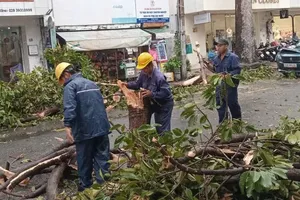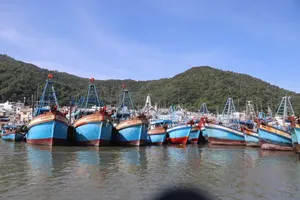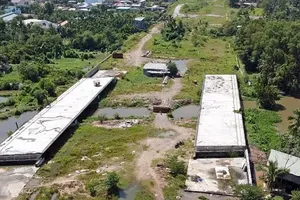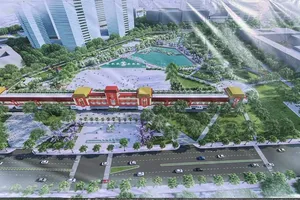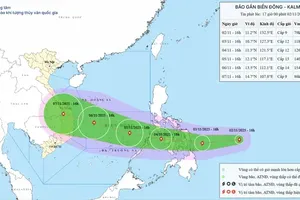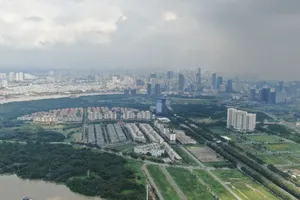According to the Institute for Water and Environment Research, Ho Chi Minh City suffers an average loss of VND6.2 trillion (US$335 million) each year due to floods.
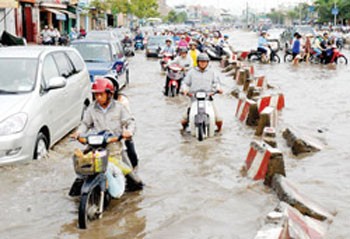
The figure includes damage caused to public works and agricultural production; losses incurred when city work comes to a standstill; and additional healthcare costs when water-born diseases break out as a result of flooding.
The institute recently announced a project that details plans to improve city dykes, drainages and water regulation reservoirs to deal with flooding in HCMC.
The project is the next step of a larger plan to prevent inundation in the city proposed by the Ministry of Agriculture and Rural Development and approved by the Prime Minister in October 2008.
The most important and challenging part of the project is to determine the direction in which to build a dyke around the city’s riverside areas.
In principle, the dyke should be built from Ben Suc in Cu Chi District, then run along the Saigon River before leading into Vam Co River in Duc Hoa District in the neighboring province of Long An.
A group of researchers have proposed three ways to build the dyke. All of them are similar, but would be built in different sections from Vam Thuat River in HCMC to Can Duoc town in Long An, where the density of residents peaks.
The first suggestion proposes the city take advantage of streets like Dinh Tien Hoang, Xo Viet Nghe Tinh, Nguyen Huu Canh, Ton Duc Thang, Nguyen Tat Thanh and Huynh Tan Phat to build the dyke.
In the second proposal, the dyke could be built along the Saigon riverbank.
The third project is similar to the second except for a stretch from Phu My Bridge to Kenh Lo Drain, where the dyke would be built along streets including Nguyen Lo and the North-South Highway.
Experts say that in theory, the first method is best because the length of the dyke would be the shortest, which would save costs. However, it may not be feasible because construction would have to be carried out along hundreds of kilometers along small, inner-city streets.
The second proposal is less persuasive because the cost for site clearance and compensation would be very high at about VND22.5 trillion (US$1.2 billion).
The third suggestion looks to be the most cost efficient. Accordingly, the dyke could be built at a total cost of VND11.68 billion ($600 million).
The amount is VND200 billion ($11 million) lower than that of the first method and just a third of the cost of the second.
This plan would also encourage the State and residents to work together to speed up the project’s implementation.
Economic, cultural, security and national defense establishments located close to the riverbank would thus be responsible for raising their own infrastructure to prevent flooding.
The research group said that if the dyke project is successful, the economy could also benefit from a higher growth rate.
Economic experts have said that without floods, the city’s GDP could increase by 4.3 percent a year, meaning the annual benefit of preventing floods could account for more than VND11.4 trillion ($616 million) a year.
The project will also help the city to clean canals and keep water in them during the dry season to prevent foul smells.
